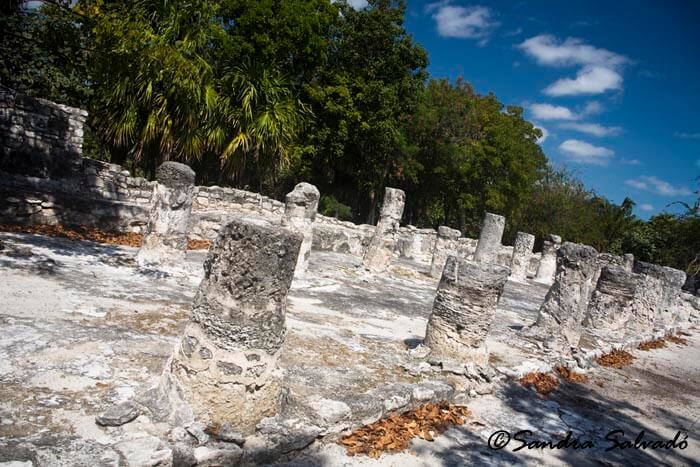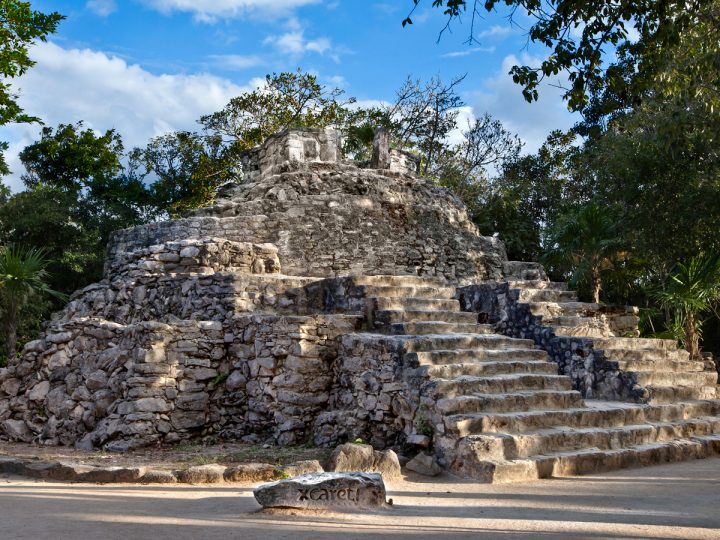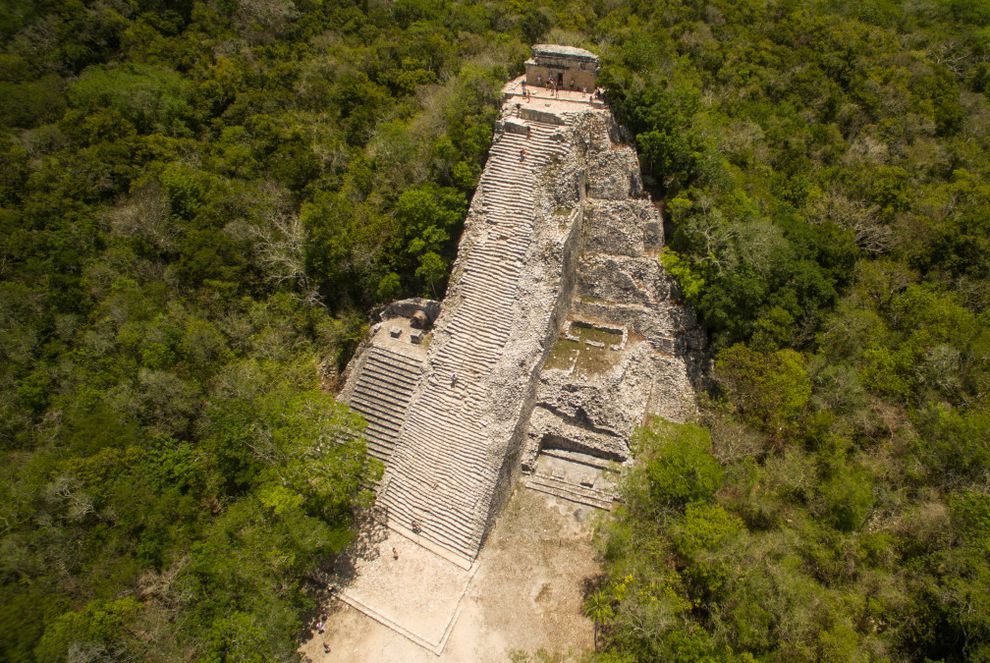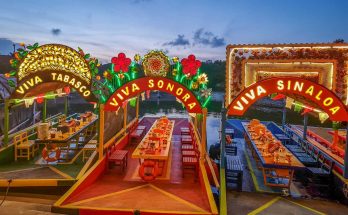Do you know the Cancun’s archaeological sites and its surroundings? If your answer is no, don’t worry because in this article we will tell you what they are so you won’t miss them. It should be noted that they are little known, but you just got here and should be one of the things to do in Cancun on your list of activities.
Table of Contents

Cancun Archeological Sites
The city of Cancun has 3 archaeological sites and in its surroundings there are approximately 5 more and that is why in this article we will talk about each of these wonderful places that you have to know in your visit to Cancun.
San Miguel Archaeological Zone
The archaeological zone known as San Miguel or San Miguelito for friends, is part of the Mayan Museum of Cancun and is located at kilometer 16.5 of the Hotel Zone.
This pleasant site is not very commercialized and that is precisely why it is ideal to spend a few hours of tranquility and harmony with nature and appreciate the settlement that was part of the ancient chiefdom of Ecab, which had as main economic activities, fishing, agriculture, production of salt, honey, copal and cotton, which were marketed in a complex network that was dismantled in the mid-sixteenth century with the arrival of the Spaniards to the Yucatan Peninsula.
This Cancun archaeological site has the advantage of being in the same facility as the Mayan Museum, so when you pay the entrance fee to the museum, you can also visit the archaeological site.

El Rey Archaeological Zone
This archaeological site is located at kilometer 18 of Cancun’s hotel zone, very close to the Mayan Museum and a few minutes from Dolphin Beach, where by the way is the city’s photo stop.
It is believed that this archaeological site of Cancun was the first to be explored in the city and is made up of two squares and two main streets, unlike other archaeological sites that only have one.
Its style is very similar to that of the archaeological site of Tulum and in its interior remains of painting were found, as well as a kind of tomb that probably belonged to a king.
Currently, next to this site is located the Mayan Park Tour, which offers with the entrance to the park an experience among the Nichupte lagoon and includes a visit to the archaeological site of El Rey.

Temple of the Scorpion
Very close to Playa Marlín, exactly 400 meters walking on the left hand side you can find the Temple of the Scorpion. This is the only archaeological site in Cancun built on a cliff and can only be accessed by walking along the beach. Since it is located in a hotel zone, access to it must be through the beach of the Royal Park Hotel. It is believed that in the past, this place was an observation and surveillance point.

El Meco Archaeological Zone
El Meco is a small archaeological zone located in the north of Cancun, in the municipality of Puerto Juarez and is a small restored area of the post-classical period, where you can see a large pyramid and the ruins of what were once halls.
El Meco is a little known archaeological site and this is what provides the tranquility that shelters and has allowed various reptiles to live in tranquility and harmony with the few visitors to the place.

Ruins of the Temple of the Goddess Ixchel
The ruins of the temple of the Goddess Ixchel (Goddess of fertility) are located on the southern tip of Isla Mujeres and is a small area of just 50 meters that has the sculpture of the Mayan goddess and although there is not much information about this small place, it is believed that in the past its inhabitants were only women worshipers of love, happiness and Ixchel.

Xcaret Archaeological Zone
Xcaret is more than a theme park built in an archaeological zone that over the years has been cared for, maintained and become a fundamental part of the experience of each of its visitors.
This archaeological site in Cancun is not really part of Cancun because it is located in Playa del Carmen, which is part of the Riviera Maya. However, the name of the park “Xcaret” is due precisely to this archaeological site and it is believed that in the past this place had another name which was P’olé, derived from the root p’ol, which implies merchandise, deal and contract with merchants. P’olé was an important commercial port and place of departure and arrival of pilgrimages to Cozumel.

Xelhá Archaeological Zone
Xelha is another of the parks that belong to the xcaret group and although it is highly promoted for being a place where you can snorkel and live with marine life, it is also recognized as an archaeological zone.
The name of this site comes from the Mayan word composed by xel, piece, entrance, and há, water; that is to say, “water entrance”, in allusion to the geography of the place. The cove of Xelhá is one of the most important of the coast of Quintana Roo since pre-Hispanic times because it is a natural shelter area.

Chichen Itza Archaeological Zone
This archaeological site is considered one of the 7 wonders of the modern world and is one of the greatest inheritance of the Itza, Aztecs and Mayas. And although this site is made up of a Main Esplanade, the Observatory, the Sacred Cenote, the Ball Court and the Temple of the Thousand Columns, what stands out with much more vigor is its incredible pyramid of Kukulkan.
The Pyramid of Kukulkan, has become famous not only for its size, shape and architecture, but also for the incredible spectacle that we are given during the spring and autumn, where you can see the “feathered serpent” descend, which gradually goes down the stairs of the pyramid. A spectacle not to be missed!

Coba Archaeological Zone
To finish this article we present the archaeological site of Coba, considered one of the largest Mayan cities of the Classic Period. The meaning of Coba is translated into Spanish as “water agitated by the wind”.
From your arrival at the entrance of the area you will be immersed in a dense jungle that will protect you from the harshness of the sun to make your visit more bearable and without a doubt you have to know this incredible place.

Conclusion
While there are several archaeological sites that are part of the city of Cancun, very close to it we have others and no doubt to visit each of them will be an experience, because each of them give us their own activities that can be performed both in the areas themselves, as well as near them.




